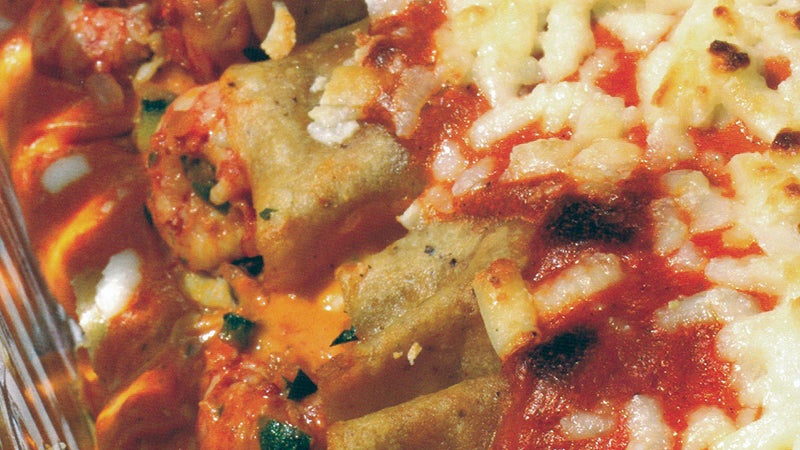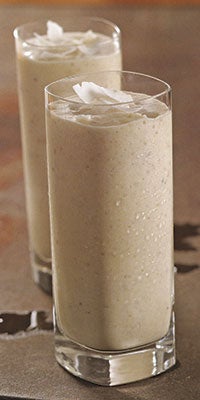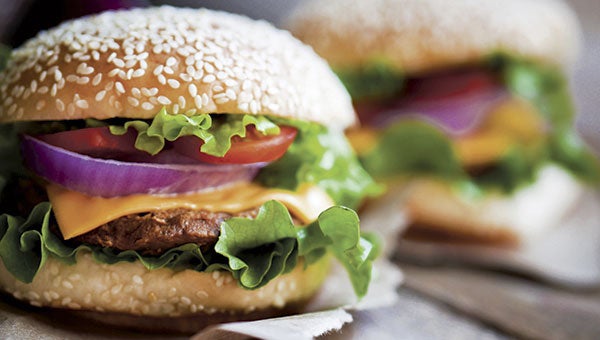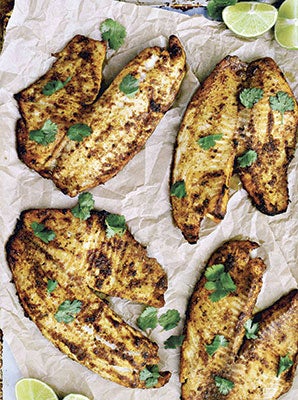Try these Moroccan dishes
Published 12:00 am Saturday, February 28, 2015
We had decided on a winter trip to Morocco. Bought a guidebook and skimmed through it. I read, “If you can see only one city in Morocco, make it Marrakesh.” and so we did. We had to fly through Madrid (and even overnight there on the way back). I notified the credit card company. “Where is Morocco?” she asked. It’s North Africa, Muslim. But stable and north of the Ebola outbreak in western Africa. “Are you going anywhere else?” “Yes, we will spend the night in Madrid.” “Is that in Morocco?” So much for well-traveled credit card agents!
Marrakesh is a walled city on a desert plain north of the snow covered High Atlas Mountains. We decamped in the Palmeraie—a palm studded oasis outside the city. We were welcomed in the lounge by the hostess with a pot of mint tea, the national drink of Morocco. The à la menthe is offered for, with, and following breakfast, lunch, and dinner. We were tired but had a light lunch in the garden of lamb and brazed fennel, and starting with local olives and Moroccan bread as all our meals would. We truly loved the olives. They were different from what we get here in the stores. We had a glass of wine. Asked about a Merlot but were offered a local red from Meknes—Saharri. An appropriate name as we were on the edge of the Sahara Desert, the third largest desert in the world (after the Artic and the Antarctic) and about the size of the United States. We rested before dinner and then got a good night’s sleep.
We headed out the next morning for the medina, the old walled city. I was impressed with the still extant city walls (begun in the 12th Century), neatly landscaped outside, and teaming with houses and alleys inside. We entered by one of the many still open gates and headed to the Djemâa el Fna, the carnivalesque market right at the center of the medina. It was designated by UNESCO in 2001 as a ‘Masterpiece of the Oral and Intangible Heritage of Humanity.’ There are food stalls, fresh orange juice stands with the mounds of seasonal oranges awaiting squeezing, women offering henna tattoos, young men displaying Barbary apes on chains, water sellers in colorful lampshade-like hats, storytellers, magicians, jugglers, snake charmers, musicians, singers, gymnasts, and peddlers of everything. We then wended our way into the souks. There is no map. You will get lost. We just wandered and wondered. Mid-morning we stopped at a small café that spilled out into the street. We had mint tea and watched the people, motorcycles, donkey carts and all stream by. Quite a show! For lunch we went into a restaurant that the hotel had recommended and had lunch in the courtyard. We decided to have a bowl of the hearty harira (chickpea, lentil and meat) soup.
The recipe comes from ‘La Maison Arabe Moroccan Cooking—Our Dadas’ (typical Moroccan cooks) Recipes’
Harira
Soup base
½lb. lamb meat, diced
2 onions (finely chopped)
½ lb. dried legumes
3.5 ounces dried chick peas (soaked overnight) 3.5 ounces celery (chopped)
A small bouquet of fresh flat-leaf parsley, cilantro, and celery leaves
3 tablespoons vegetable oil
1 teaspoon salt
¼ teaspoon ground turmeric
1 teaspoon unsalted butter
Tomato sauce:
3 medium sized tomatoes, peeled and pureed
2 tablespoons tomato paste
3 tablespoons olive oil
½ teaspoon black pepper
½ teaspoon ground ginger
Thickening sauce:
1 cup all-purpose flour
Water
Other: ¼ cup Italian vermicelli
Place all the “Soup Base Ingredients” except the water in a pressure cooker. Mix well. Cook on medium for 5 minutes.
Add 8 ½ cups of hot water. Close the pressure cooker and cook, over high heat, until pressure is achieved. Reduce the heat and cook for 30 minutes.
Check that the beans and chick peas are cooked. They should be tender. If not, add more water and cook 15 more minutes.
In a large bowl, mix all the “Tomato Sauce ingredients.”
Add the tomato sauce to the soup base. Stir well. Cover and cook over high heat until pressure is achieved. Reduce the heat to medium and cook for 10 minutes more.
Release the pressure and add the Italian vermicelli to the soup. Cover and cook on medium-low heat for 5 minutes or until the vermicelli are plumb and soft.
To create the thickening sauce, mix the cup of flour with enough water to get a smooth paste. Make sure that all the flour is dissolved.
Finally, add the thickening sauce to the soup and stir constantly until completely mixed. Reduce the heat to low and cook for 5 minutes. The soup will start thickening. Taste and adjust seasoning. If it should become too thick add more water.
Serve the harira hot is soup bowls. You can add lemon juice to the soup for a tangy taste. In Morocco, harira is served with dates, figs, and Moroccan honey pastries.
We bought a teapot, tray and typical Moroccan glasses for tea and hope to use them for some mint tea back home. The Moroccans use Chinese green tea brewed with a handful of mint leaves and liberally loaded up with sugar. We had the tea poured from about 3 feet from the pot to our glasses or served in larger glasses filled with fresh mint. Fresh mint is essential. In the souk the tea came with three cubes of sugar. I thought one was just about right. Tea was introduced to Morocco in the mid-19th century when blockaded British merchants unloaded ample quantities of tea at major ports. The tradition has now become such a symbol of Moroccan hospitality that not drinking three small glasses of tea when your host offers it is nearly a declaration of hostilities.
Another edible treat I had one day was a cactus fruit. I had never eaten one before.
These are the pod left on the opuntia cactus pad after flowering.
The vendor had a stack on his tray and served these by pealing with one slice around the center then handing the red interior to us on a toothpick.
It had a sweet-tart taste with the consistency of something like a Kiwi. More next week!





